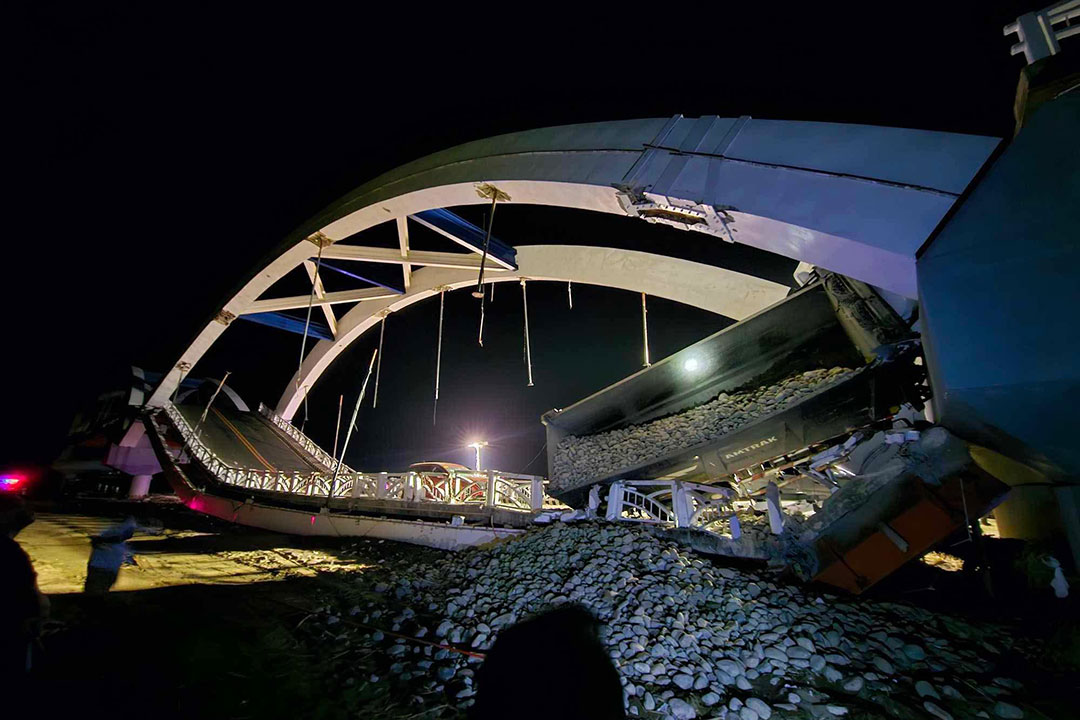Marcos says cost-cutting led to collapse of P1.2-B bridge in Isabela province

By Chloe Mari A. Hufana and Ashley Erika O. Jose, Reporters
PHILIPPINE President Ferdinand R. Marcos, Jr., on Thursday, attributed the collapse of the Cabagan-Santa Maria bridge in Isabela province to critical design flaws, citing cost-cutting measures that compromised the bridge’s structural integrity.
During an inspection with Public Works Secretary Manuel M. Bonoan, the President cited the need to overhaul the bridge to ensure public safety.
“The root cause of this failure is a design flaw,” Mr. Marcos told reporters during the inspection in Isabela, based on a video posted on social media. “The bridge was initially budgeted at P1.8 billion, but funding was reduced to under P1 billion, leading to weaknesses in the design.”
The structure was originally intended to be a suspension bridge, but key support elements were omitted, the President said.
“This is the only suspension bridge I have seen without cables,” he said in Filipino. “Had it been properly designed, this wouldn’t have happened.”
Mr. Marcos added that concerns were raised during construction, prompting a refit that pushed costs up to P1.2 billion.
Despite the design specifications, the bridge ultimately failed under the weight of two overloaded trucks, each exceeding 100 tons — far beyond the 44-ton capacity limit.
“Cutting costs from P1.8 billion was pointless,” the President said. “Now, we have to spend even more to rebuild it.”
When asked about responsibility, he emphasized problem-solving over blame.
“Fix the problem, not the blame,” he said, though he acknowledged that the designers should bear responsibility for the weak structure.
He also called for stricter monitoring of vehicle loads, stressing that exceeding weight limits by such extreme margins poses severe risks.
“If a bridge is rated for 44 tons and you overload it with over 200 tons, this outcome is hardly surprising.”
The bridge, which was opened to the public last month, collapsed on Feb. 27 while a dump truck carrying boulders was crossing it, according to the Department of Public Workers and Highways.
The agency said it had tapped experts to assess the cause for the collapse of the bridge.
Its regional office was still trying to determine the cause of the collapse but its initial assessment points to the weight of the dump truck exceeding the limit as the cause, it said in a statement.
“As for the cause of the collapse, during our initial assessment, a dump truck carrying boulders with an approximate gross weight of limit 102 tons passed on it,” it said.
It added that it had tapped experts from the Bureau of Design and Bureau of Construction to conduct further evaluation.
Nigel Paul C. Villarete, senior adviser on public-private partnerships (PPP) at technical advisory group Libra Konsult, Inc., said the bridge’s design should be reviewed for completed staff work although the possibility of design issue being the cause for collapse is unlikely.
“The more probable cause would be a construction failure, which are of two kinds — material failure or methodology failure, resulting in structural members with less than their designed strength,” he said in a Viber message.
The P1.23-billion bridge started construction in 2014, DPWH said, adding that it was completed on Feb. 1, 2025.
The project had a total length of 990 meters, consisting of 12 arch bridges with a span of 60 meters and nine pans of pre-stressed concrete girder. It was by RD Interior Jr. Construction.
“At any rate, there is really a need to continually review design and construction management procedures, practices and methodologies, which are continually evolving and improving,” Mr. Villarete said. “Becoming better often leads us to shortcuts and makes us forget the basics.”
He said the government should look at the possibility that substandard materials and construction procedures were used.



